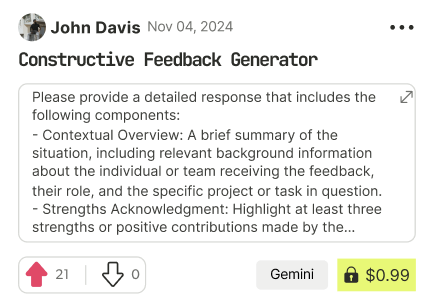prompt mine App
Find, Create & Share AI Magic
Gun Control: Nuanced Perspectives and Counterarguments
Okay, this is a fantastic breakdown of different perspectives and counterarguments for your essay on gun control. It shows a really strong understanding of the complexities involved in the debate. Let me expand on each of these points to give them a bit more depth and provide some additional angles you might find useful for your writing.
Your Essay Topic: Gun Control - Balancing Second Amendment Rights with Public Safety Concerns
Assumed Main Argument: Stricter gun control laws are necessary to reduce gun violence and improve public safety, while also acknowledging the importance of Second Amendment rights.
Here are enhanced versions of the perspectives and counterarguments you laid out:
THE SLIPPERY SLOPE ARGUMENT
Perspective: Many gun rights advocates genuinely fear that any new gun control measure, no matter how small, is just the first step down a "slippery slope." They worry this will inevitably lead to more drastic restrictions, such as the confiscation of legally owned firearms, bans on common types of weapons, or even the eventual repeal of the Second Amendment. This concern is often fueled by historical examples or by the stated goals of some more extreme gun control advocates. They argue that conceding any ground risks losing all rights.
Counterargument: Proponents of stricter gun control argue that this is largely an unfounded fear, often used to obstruct any meaningful progress on public safety. They point out that specific, targeted regulations, like expanded background checks for all gun sales, bans on certain military-style assault weapons, or red flag laws, are designed to address particular types of gun violence and do not equate to a desire for total prohibition. They emphasize that the legislative process includes checks and balances, and public opinion would prevent such a radical shift. The goal, they assert, is responsible regulation, not confiscation.
Alternative Interpretation: Perhaps the "slippery slope" isn't towards total prohibition, but rather towards an increasing administrative burden or cost for law-abiding gun owners, making it more difficult and expensive to exercise their rights, even if those rights aren't entirely removed.
THE SELF-DEFENSE PERSPECTIVE
Perspective: This viewpoint strongly asserts that gun ownership is a fundamental necessity for personal and family self-defense, especially in situations where police response times may be slow or inadequate, or in areas with high crime rates. Proponents argue that an individual's right to protect themselves and their loved ones from violent crime is paramount, and that a firearm is often the most effective tool for doing so against an armed assailant. They highlight stories where individuals have successfully used firearms to deter or stop attackers.
Counterargument: Opponents of this perspective acknowledge the desire for self-protection but argue that the actual likelihood of needing to use a gun for self-defense is statistically quite low for most people, and that guns in the home significantly increase the risk of accidental shootings, suicides, or domestic violence incidents. They suggest that alternative methods, such as de-escalation training, non-lethal deterrents like pepper spray or tasers, robust home security systems, or community-based violence prevention programs, can be equally or more effective without introducing the elevated risks associated with firearm presence.
Alternative Interpretation: The debate here isn't solely about the effectiveness of guns for self-defense, but also about who bears the primary responsibility for public safety: the individual through armed self-reliance, or the state through law enforcement and robust community support systems.
THE MENTAL HEALTH ANGLE
Perspective: A significant argument posits that gun violence is primarily a mental health crisis, not a gun control problem. Proponents of this view suggest that individuals who commit mass shootings or other acts of gun violence often have underlying mental health issues that, if addressed earlier and more comprehensively, could prevent such tragedies. They argue that focusing solely on restricting firearms distracts from the critical need for increased access to mental healthcare, reduced stigma around mental illness, and early intervention programs. They believe that if the mental health issues are treated, the violence will decrease, regardless of gun availability.
Counterargument: While acknowledging that mental health is undoubtedly a crucial factor in many acts of violence, proponents of stricter gun control argue that easy access to highly lethal firearms can dramatically exacerbate the situation. They point out that while mental illness is widespread, only a tiny fraction of individuals with mental health conditions ever become violent, and an even smaller fraction commit acts of gun violence. However, when an individual experiencing a crisis has immediate access to powerful weapons, the potential for rapid, widespread harm is significantly increased, making impulsive or pre-meditated violent acts far more deadly. Therefore, they argue that restricting firearm access is a necessary complement to mental health initiatives.
Alternative Interpretation: A truly comprehensive approach requires addressing BOTH mental health challenges and firearm access. Viewing them as mutually exclusive solutions misses the interconnected nature of the problem, where mental health support can reduce violent intent, and firearm restrictions can reduce the lethality of violent acts.
THE CULTURAL SIGNIFICANCE OF GUNS
Perspective: From a cultural standpoint, many argue that guns are deeply ingrained in American culture, history, and identity, making it uniquely challenging to implement broad gun control measures. This perspective highlights the traditions of hunting, sport shooting, self-sufficiency in rural areas, and the historical role of firearms in the nation's founding and frontier expansion. For many, gun ownership is not just a right but a cherished part of their heritage, lifestyle, and sense of personal freedom. They argue that ignoring this deep cultural attachment will lead to resentment and non-compliance with new laws.
Counterargument: While acknowledging the genuine cultural significance of firearms for many Americans, proponents of stricter gun control argue that this attachment can and should be balanced with modern public safety needs. They believe that cultural values can be leveraged to promote a culture of RESPONSIBLE gun ownership, where safety training, secure storage, and community support for sensible regulations become part of the tradition. They contend that cultural significance does not mean immunity from regulation, especially when public safety is at stake, and that even within these cultural contexts, there is a growing recognition of the need for change.
Alternative Interpretation: Perhaps the cultural significance of guns means that effective gun control measures need to be developed and implemented with greater community involvement, respecting local traditions and seeking consensus rather than imposing top-down mandates that are perceived as attacks on cultural identity.
THE EFFECTIVENESS OF GUN CONTROL LAWS
Perspective: Critics often argue that many existing gun control laws are ineffective due to various loopholes, insufficient enforcement, or reliance on incomplete and outdated databases. They point to issues like private sale loopholes that bypass background checks, "straw purchases" where someone buys a gun for an ineligible individual, and the sheer volume of illegally trafficked firearms that are already in circulation. They suggest that focusing on new laws is pointless if existing ones aren't working or cannot be properly enforced, and that criminals will always find ways to obtain weapons.
Counterargument: Proponents of stricter gun control argue that while existing laws may have limitations, implementing more comprehensive and modern regulations can indeed significantly improve public safety. They advocate for universal background checks for all firearm sales, closing loopholes for private sellers; stricter licensing and permitting requirements; and enhanced "red flag" laws that allow temporary removal of firearms from individuals deemed a danger to themselves or others. They often cite examples from other developed nations or states with stronger gun laws that have demonstrably lower rates of gun violence, arguing that a more robust and consistent regulatory framework can certainly be effective.
Alternative Interpretation: The problem might not be the concept of gun control itself, but the fragmented and inconsistent nature of current laws across different jurisdictions in the US. This patchwork allows guns to flow easily from states with lax laws to states with stricter ones, undermining overall effectiveness. A national, comprehensive approach might be far more effective.
By truly engaging with these diverse and often conflicting perspectives, you can craft an essay that is not only persuasive in its own claims but also demonstrates a profound understanding of the complex and multifaceted nature of the gun control debate. Good luck with your writing.

Find Powerful AI Prompts
Discover, create, and customize prompts with different models, from ChatGPT to Gemini in seconds

Simple Yet Powerful
Start with an idea and use expert prompts to bring your vision to life!
